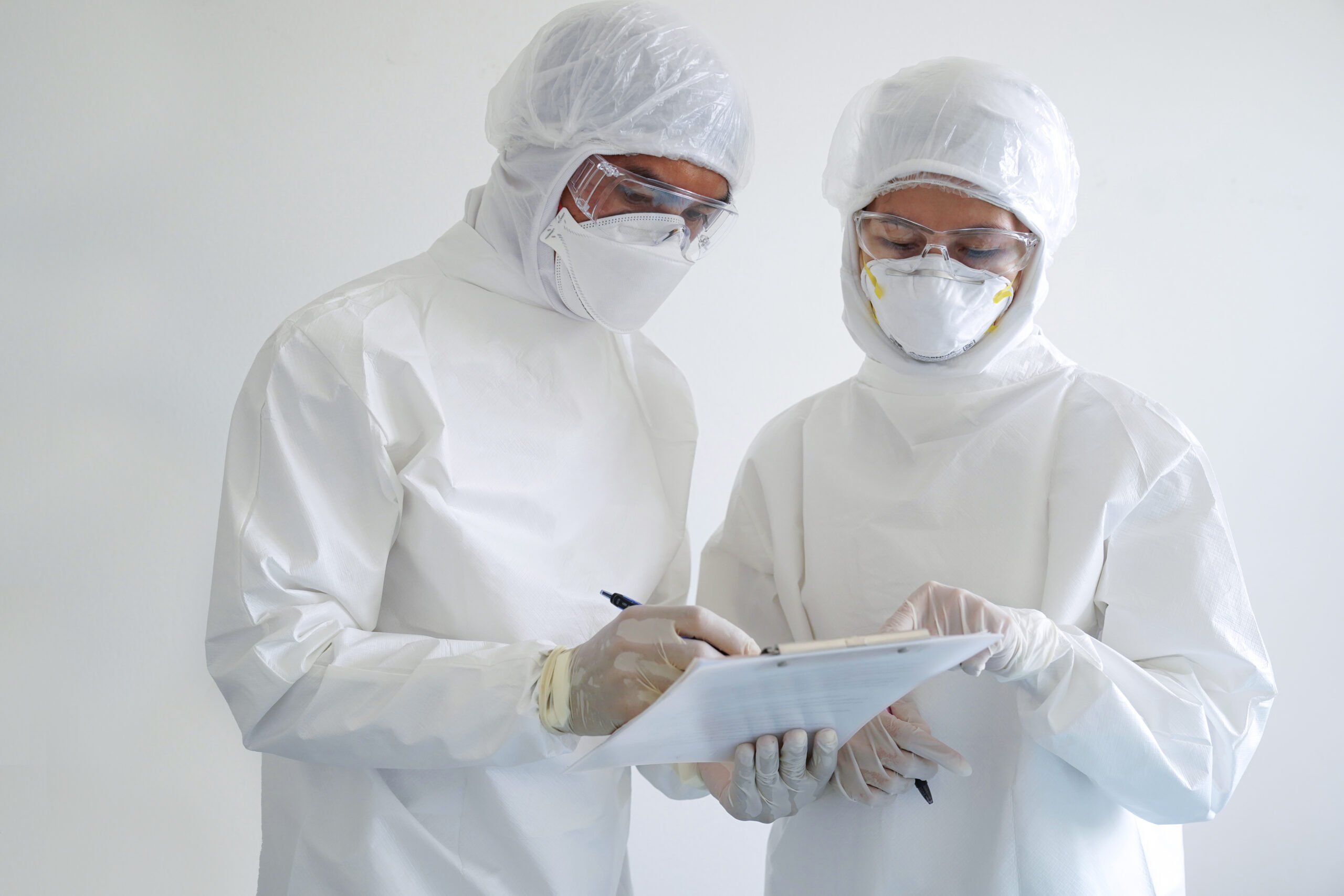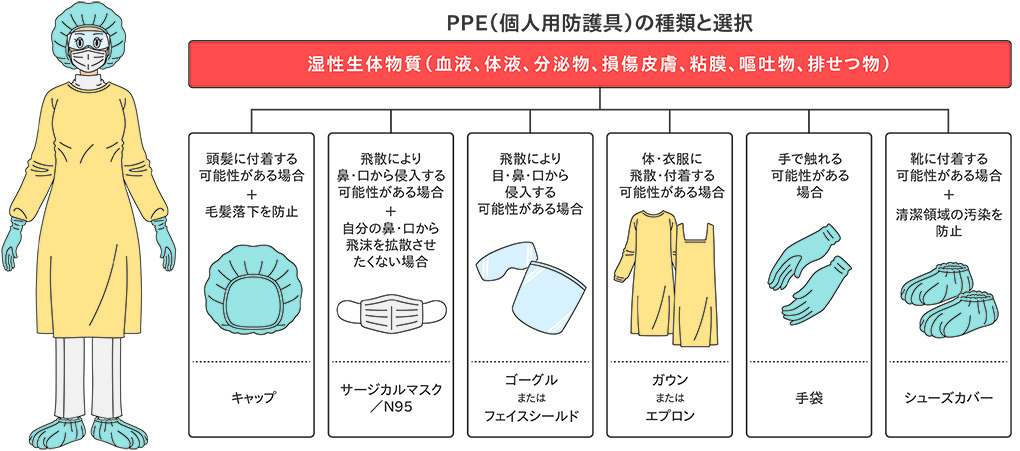
Release date: 2021.01.28
Personal Protective Equipment (PPE) to protect healthcare workers from infections through wet biological substances such as blood, body fluids, secretions, damaged skin, mucous membranes, vomit, and excreta in the medical setting. Use is extremely effective. In order to fully fulfill the role of PPE, it is necessary to consider the work content and use it appropriately according to the situation (see the figure below). Also, in the recent epidemic of new coronavirus infections, the importance of proper use of PPE was once again recognized.

The main PPEs used in medical facilities are gloves that cover hands, masks that protect mucous membranes such as eyes, nose, and mouth, face shields, goggles, isolation gowns that protect the body, and gowns and aprons. There are (made of plastic), a cap that protects the head, and a shoe cover that protects the undercarriage.
The cap protects against contamination from contact and splashes and from falling hair.
Face shields and goggles are used to protect the eyes, nose and mouth in the presence of blood or fluid droplets from the patient. During open surgery, it is reported that the face is exposed to even a small amount of blood, and proper wearing is desired.
Surgical masks reduce the risk of exposure to pathogen droplets from blood and body fluids. The material is non-woven fabric, and the filter is finer than that for home use. In the case of airborne infections such as tubercle bacilli, an N95 mask that blocks 95% or more of fine particles of 0.3 μm or more is used.
Non-woven isolation gowns and plastic gowns and aprons should be worn when moist biomaterials such as blood, body fluids, and excrement may be scattered. It is desirable to use a material that does not easily penetrate liquids. It is recommended that the gown has long sleeves and tight cuffs and can cover a wide area including the back.
Gloves protect against contact and splashes from blood, body fluids and infectious substances. It has also been reported to reduce the risk of contamination from needlestick cuts when handling injection needles and scalpels. Hand hygiene is required after use as well as removing gloves to avoid contact with contaminated surfaces.
Shoe covers are worn to prevent contamination from moist biomaterials and to prevent environmental pollution in clean areas such as operating rooms due to walking.
ASOURCE SELECT
Cap >Neo Fit cap
Mask >Neo Fit Mask S
Mask >Neo Fit Mask N
Mask >Neo Fit Mask MJ
Apron> Neo Fit Plastic Apron
Gown> Neo Fit Plastic Gown
Isolation Gown> Neo Fit Isolation Gown KG
Gloves >Neo Fit Gloves
Gloves >Neo Fit Gloves Light
Gloves >Neo Fit Gloves SH
Shoe Cover >Neo Fit Shoe Cover
Related article
Differences in medical masks
How to choose medical gloves
MEDIUS Group is developing a business centered on the sale of medical equipment. We (Medical + us) involved in medical care also want to play the role of an information source (Media) that delivers useful information for the medical field and people's healthy tomorrow.